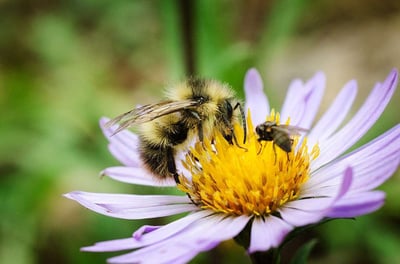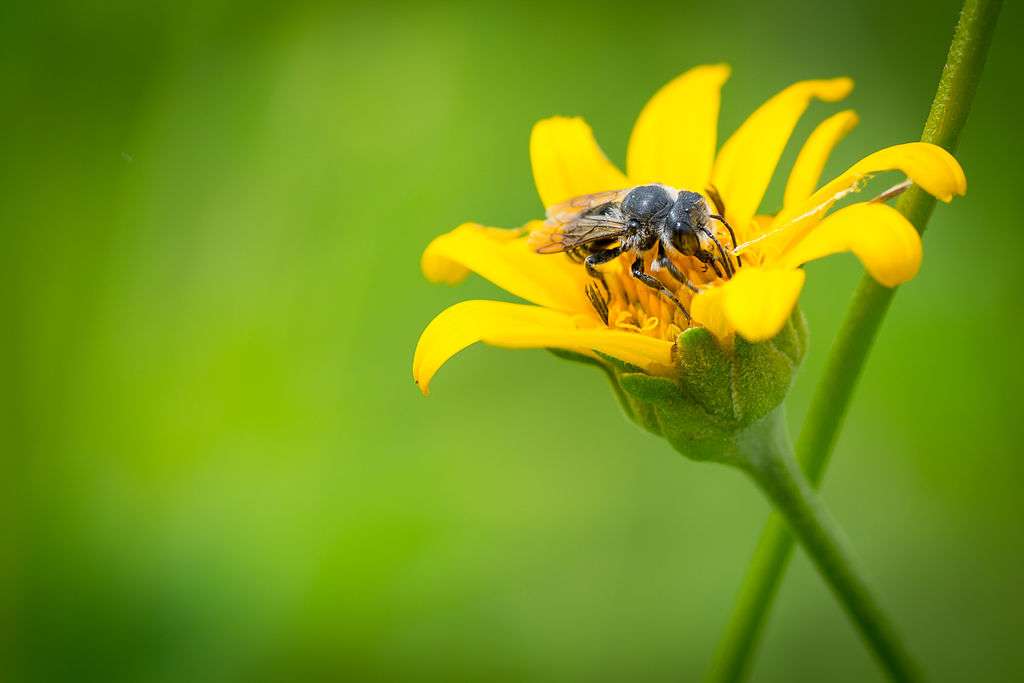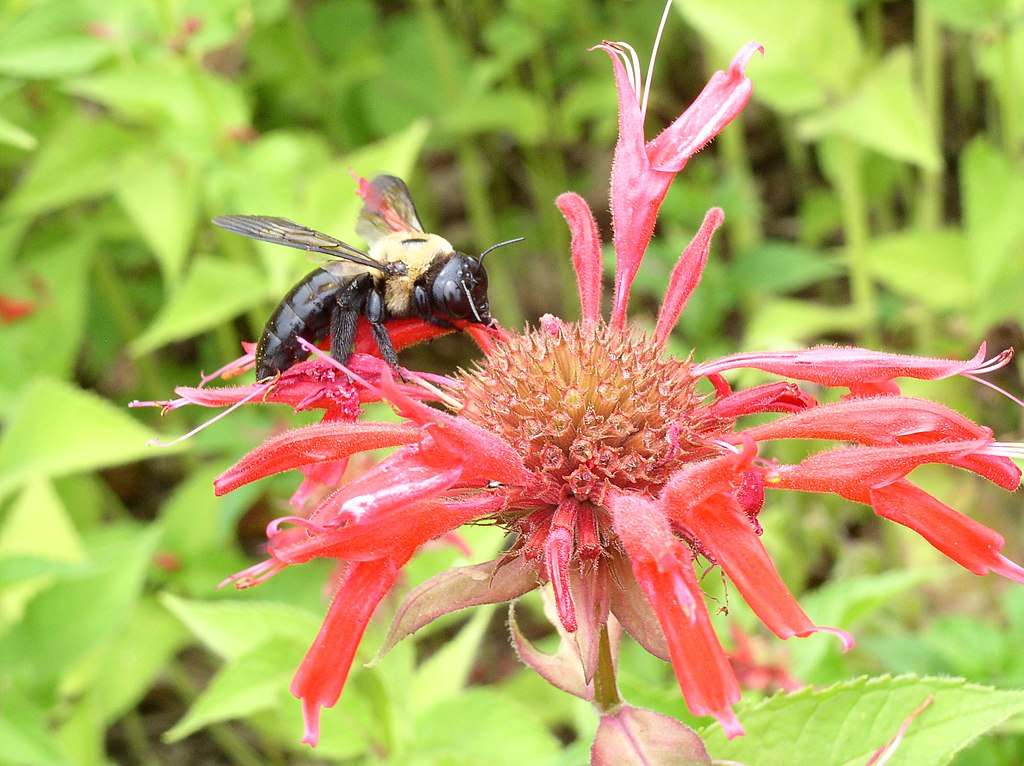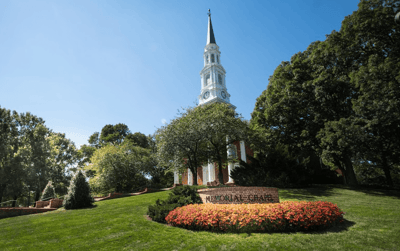 JT Hipp is a certified pesticide applicator, which means he’s trained to safely kill insects.
JT Hipp is a certified pesticide applicator, which means he’s trained to safely kill insects.
But he loves bees.
“Bees are one of the best things for landscaping,” says Hipp, an operations manager at Level Green Landscaping.
There’s been a lot of buzz lately about the plight of the little guys.
Climate change, pesticides, and destruction of habitat by development are a few of the factors threatening the bee population.
They can use our help. It’s only fair, after all they do for our landscaping.
How are native bees beneficial?
Here’s the buzz.
Love Your Flowers? Thank Bees
“Bees play a very important role in one of our clients’ favorite parts of the landscape — color,” Hipp says.
When bees collect pollen, they carry it from one flower to another. This cross-pollination helps flowers produce more seeds.
As bees cross-pollinate, more flowers and plants will grow.
The bees get the nutrients they need, and your flowers thrive.
Everybody wins.
How Are Native Bees Beneficial? Do You Like Food?
Love watermelon? Apples? Blueberries? Almonds?
Thanks, bees.
As wild pollinators, bees are essential to world food sources. Lots of the foods you likely love require pollination.
What Bees Are From Around Here?
While honey bees get all the buzz, most of the world’s bees don’t live in hives or make honey.
That common honey bee you often see buzzing around your flowers isn’t native to Maryland, Hipp says. They’re originally from Europe.

But there are 400 species of bee documented in Maryland alone, Hipp says. Many are native species, including bumblebees, carpenter bees, miner bees, mason bees, and leaf-cutter bees.
How are native bees beneficial?
Scientists say native bees are actually two to three times better pollinators than honeybees and not as prone to the headline-catching colony collapse disorder that has decimated honeybee populations.
Don’t Bash Bees
Tempted to swat them? Give bees a break.
“People have this notion that all bugs are bad,” Hipp says. “Bees have a job to do, just like we do. If you leave them alone, they’ll leave you alone.”
Better yet, bee nice and give them a hand.
How can you help bees?
Leave a Few Clover
“People don’t want to see clover in their turf,” Hipp says, “but bees think they’re one of the tastiest things out there. Leave some areas natural to entice the bees.”
Install a Pollinator Garden
All types of pollinators – insects, birds and bats – are in trouble due to habitat loss, diseases, and poor pesticide use.
Fill your property with plants they love: Virginia sweetspire. Bee balm. Cardinal flower.

Install a pollinator garden toward the back of your property, Hipp suggests. Then they’ll hang out there instead of near your entrances and parking lots.
Plus, it’s a pretty place for your employees to stroll during breaks.
Bonus: Both state and federal governments often offer tax incentives for creating pollinator habitat.
Offer Plenty of Plants
Include a wide variety of plants and flowers on your property, not just a couple. The more varieties you offer, the more native bees you’ll help.
Add Native Plants
“Honey bees aren’t native, so they’ll feed on anything,” Hipp says. “But certain native species of bees have specific diets. They’ll only feed on native plants.”
The bees will thank you by keeping your flowers looking great.
Leave Those Perennials
Don’t cut back your perennials for the winter.
Most Maryland bees nest in holes in trees or in the ground, Hipp says.
“Those perennials provide a nice warm place for bees to nest,” Hipp says.
Bees Bugging You?
While Hipp loves bees, he knows they can sometimes be a nuisance to property managers, especially toward the end of summer.
“Safety first,” he says. “If bees are near a building entrance and it concerns you, we’ll take care of it.”
But let him take a look before you start blasting bees.
“I can look at the nest and assess the situation,” he says. “Maybe they aren’t harmful bees. They might not even have stingers. There are several different species of bees and most will not bother you.”
How Does Level Green Help Bees?
Hipp and other Level Green team members regularly attend educational courses to stay certified as pesticide applicators.
They often include speakers who are bee experts, he says, who share how to help protect bees.
“If we don’t really need to spray, we won’t,” Hipp says.
Hipp and Level Green crew members are always on the lookout for native bees.
They don’t want to inadvertently spray and kill a bee colony.
Some job sites ask that they use no pesticides and leave some natural areas to support bees.
The University of Maryland, a Level Green customer, has a pollinator garden that actually includes bee hives.
“We do weed eating around the hives,” Hipp says. “If you get too close, a bee might come at you, but that’s not the worst thing in the world.”
How Are Native Bees Beneficial? Ask Level Green
 Bee questions? Just ask us.
Bee questions? Just ask us.
We love native bees, and the way they help the landscaping we install thrive. Next time you’re admiring those cheerful flowers at your entrance, thank the bees.
If you’re not already a Level Green Landscaping client, we’d love to add you to our growing list of happy customers. Our focus is on commercial properties like offices, mixed-use sites, HOAs, municipalities and institutions in Maryland, Washington DC and parts of Virginia.
Contact us at 202-544-0968. You can also request a free consultation online for a virtual meeting.
We’d love to hear from you.
Image sources: bumble bee & bee, leaf-cutter bee, bee on bee balm


